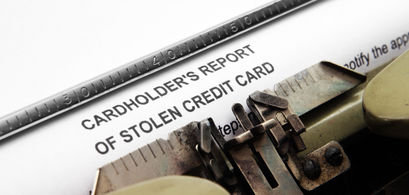Perhaps the single most important document that can be used to protect against identity theft is a credit report. These reports contain a wealth of information when it comes to financial transactions, as well as the process of accurately matching those transactions to individuals. In this article, we're going to discuss the various types of information appearing in credit reports. We'll also explain how to use that information to figure out if someone has been a victim of identity theft. Finally, we're going to explain how to go about placing a fraud alert on a credit report.
Credit Reports
The purpose of a credit report is straightforward. Debt, credit, and repayment information is organized in such a way as to allow creditors and lenders to assess the creditworthiness of a consumer. The report itself serves as a historical recording of the facts gathered by the agency, and the information is typically summarized into a credit score. Since the introduction of free credit reports, the three major agencies - Experian, Equifax, and TransUnion - have taken steps to improve the way information is organized into a report. This makes it easier for consumers to understand the information contained in the report, identify inconsistencies, as well as errors.
Interpreting Reports
Credit reports are organized into four sections: consumer identification information, borrowing / payment history, public records, and inquiry history. Each of these sections is summarized below, including how this information can be used to uncover potential instances of identity theft.
Identifying Information
This first section identifies the individual that is later discussed in the credit report. In this section appear multiple spellings and / or variations on the spelling of that individual's name. Current and prior mailing addresses will appear in this section, as will unique identification numbers such as a driver's license or a Social Security Number (SSN).
Credit reports are historical record of facts gathered by the agency and allow creditors and lenders to assess the creditworthiness of a consumer.Moneyzine Editor
If an unknown name, address, or identification number is discovered in this section, a red flag should go up for a possible case of identity theft.
Credit History
This second section contains information on the individual's borrowing, and credit activities. It will also contain a record of payments / repayments made to each creditor. Reporting agencies work hard to populate the credit history section using a wide-variety of partners such as credit card companies, traditional lenders, and utilities. For each account, the agency will record the date on which the account was opened, if the account was held jointly with another party, the total available credit, the money owed, any payment delinquency, and if the account was written-off, or closed. When looking for potential identity theft abuses, it's important to read this section very carefully. Simple errors on the report, such as those that occur when a father and son share the same name, need to be separated from the suspicious-looking accounts that don't seem familiar to anyone. If bills have been paid on time over the years, but the report contains a series or pattern of past-due accounts, this can be a signal of identity theft.\
Public Records
The public records section of the credit report is hopefully blank. If information shows up in this section, it's never good news. This part of the report contains a record of past legal judgments, bankruptcies, and tax liens. If activity in this section does not look familiar, there are two concerns. This can signal identity theft, or there is a credit-damaging error on the report that needs to be corrected.
Credit Inquiries
In this final section of a report appears a listing of every company that has recently asked to see a copy of the report. This includes two types of inquiries:
Soft Inquiries: requests that originate from companies wishing to sell something, such as a new credit card or a line of credit.
Hard Inquiries: requests originating from companies contacted by the individual identified in the report when seeking new credit. This can be as simple as a request to open a new cellular phone plan through a pre-approval on a mortgage.
Since the activity recorded here can originate from many sources, it's not a particularly helpful section when trying to pinpoint identity theft.
Fraud Alerts on Credit Reports
If someone discovers they're a victim of identity theft after reviewing their credit report, they should consider placing a fraud alert on their report. A fraud alert will help prevent identity thieves from opening additional accounts using the victim's name. Each of the three major credit-reporting agencies has a toll-free telephone number to use when reporting a potential theft of identity. This toll-free telephone number as well as the agency's mailing address appears below: EquifaxP.O. Box 740241Atlanta, GA 30348Toll-Free Number: 1-866 349-5191ExperianP.O. Box 9532Allen, TX 75013Toll-Free Number: 1-888-EXPERIANTransUnionFraud Victim Assistance DivisionP.O. Box 2000Chester, PA 19022-2000Toll-Free Number: 1-800-680-7289
Filing a Fraud Alert
Victims only need to contact one of the above agencies; that company is then required to contact the remaining two agencies. Once a fraud alert is placed on a file, the victim is entitled to receive free copies of their credit report, allowing them to continue to monitor the document for unfamiliar transactions.
Initial and Extended Fraud Alerts
There are two fraud alerts that can be placed on a credit report:
Initial Alert: placed once identity theft is suspected. This initial alert stays on a credit report for 90 days. During that time, the potential victim is entitled to one free credit report from each of the three reporting agencies.
Extended Alert: placed if a verified victim provides the company with an identity theft report. An extended alert entitles the victim to two free credit reports over the next twelve months from each of the three reporting agencies.
When a creditor sees an alert on a report, they are required to verify identity before issuing new credit. In some instances, the company will attempt to telephone the person directly. This process may add to the time it takes to secure a loan or new credit. To mitigate delays, it's important to make sure the contact information appearing in the fraud alert is kept current.


